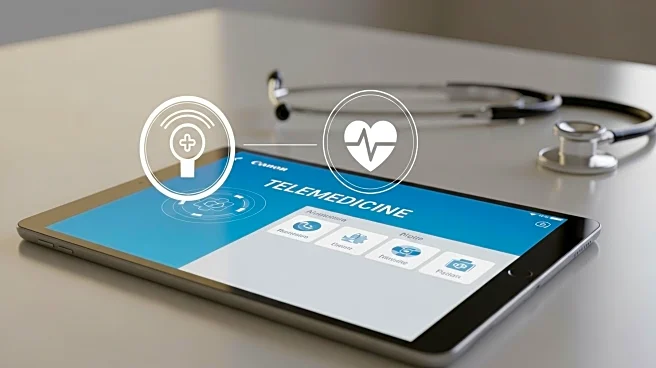What's Happening?
Optical LAN is emerging as a transformative solution for healthcare IT infrastructure, addressing the limitations of traditional copper-based LAN systems. As healthcare facilities increasingly rely on digital technologies for patient care, diagnostics, and administrative functions, the demand for fast, secure, and reliable network connectivity has surged. Optical LAN, leveraging fiber technology, offers a high-performance, future-ready infrastructure capable of supporting speeds up to 100G. This technology simplifies network architecture by converging all digital services onto a single network, reducing cabling needs and operational costs. Additionally, Optical LAN's extended reach and smaller physical footprint allow for more efficient use of space, which is crucial for healthcare facilities aiming to maximize patient room availability. The system is also designed for sterility and operational efficiency, with fiber cables that are easier to manage and maintain.
Why It's Important?
The adoption of Optical LAN in healthcare settings is significant due to its potential to enhance operational efficiency and reduce costs. By providing a more sustainable and energy-efficient network solution, Optical LAN aligns with healthcare organizations' goals to meet environmental, social, and governance (ESG) targets. The technology's ability to support a wide range of digital services on a single network simplifies infrastructure management and reduces the need for frequent upgrades, which are costly and disruptive. This advancement is particularly important as healthcare facilities continue to expand their digital capabilities to improve patient care and operational outcomes. Furthermore, Optical LAN's inherent security features, such as built-in encryption and network segmentation, are critical for protecting sensitive patient data and ensuring compliance with healthcare regulations.
What's Next?
As healthcare facilities continue to adopt Optical LAN, the focus will likely shift towards integrating this technology with emerging digital health solutions, such as telemedicine and IoT devices. Stakeholders in the healthcare industry, including IT professionals and administrators, may need to undergo training to effectively manage and optimize these new network systems. Additionally, as the technology becomes more widespread, there may be increased collaboration between healthcare providers and technology companies to further enhance network capabilities and address specific industry needs. The transition to Optical LAN could also prompt a reevaluation of existing network infrastructure investments, with potential shifts in budget allocations towards more sustainable and future-proof solutions.
Beyond the Headlines
The shift to Optical LAN in healthcare settings could have broader implications for the industry, including a potential reduction in the digital divide between urban and rural healthcare facilities. By providing a scalable and cost-effective network solution, Optical LAN could enable smaller or resource-constrained facilities to access advanced digital health services, thereby improving healthcare access and quality across different regions. Additionally, the emphasis on sustainability and energy efficiency in network infrastructure could drive further innovation in green technologies within the healthcare sector, contributing to broader environmental goals.










